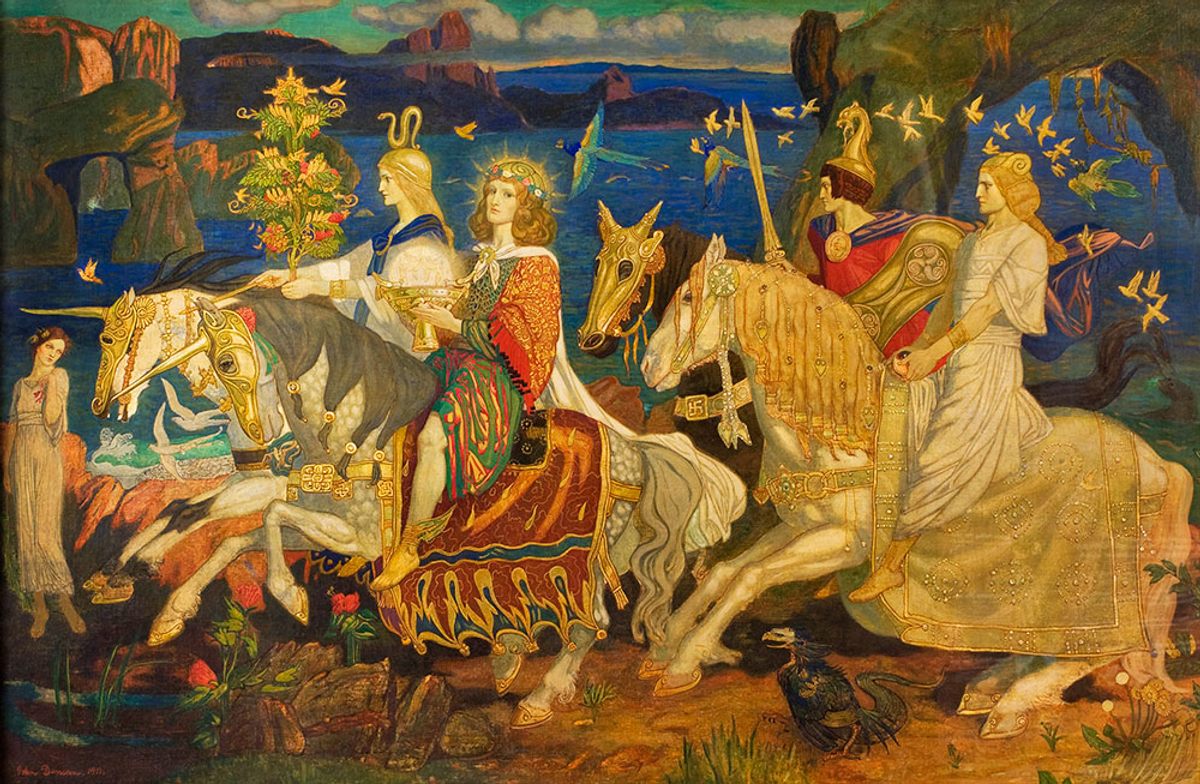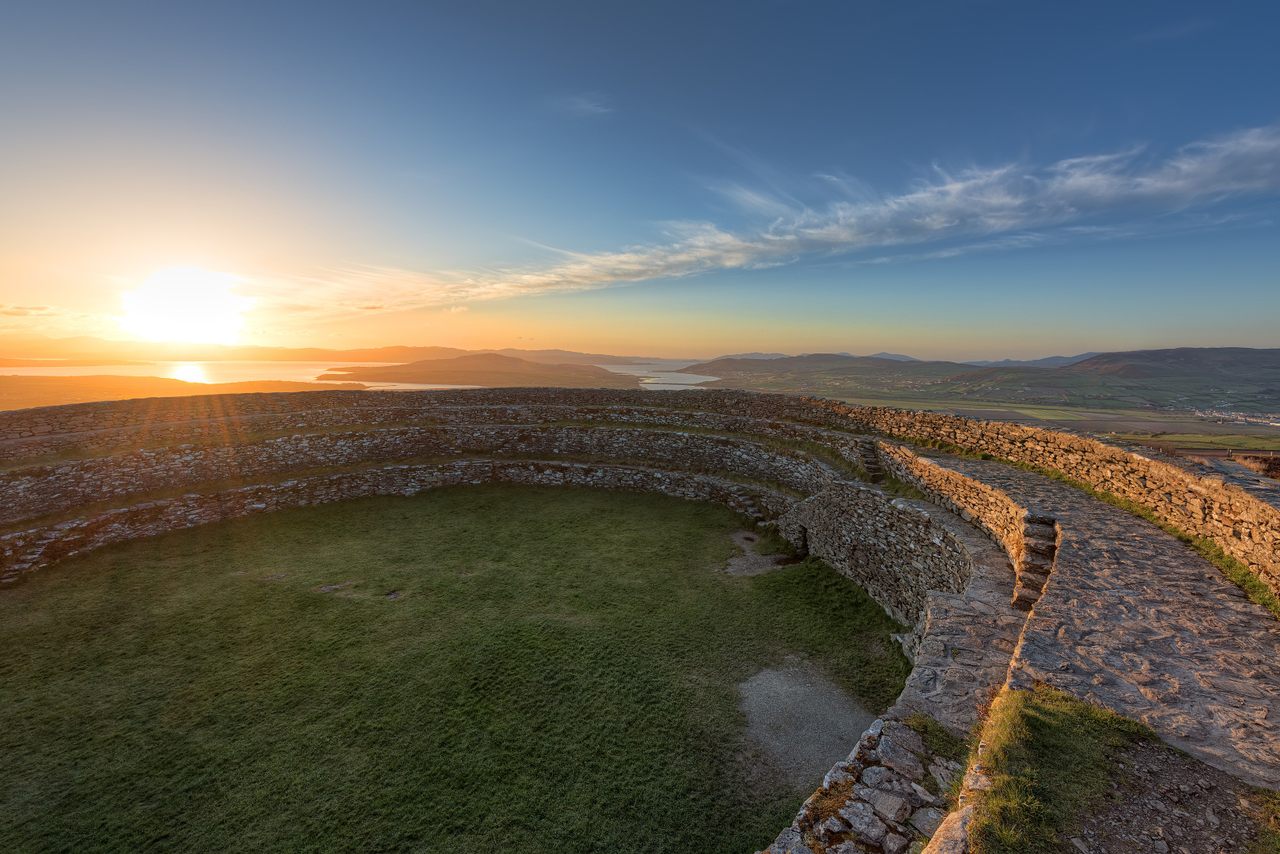What Is a Fairy Fort?
In Ireland, fears about disturbing the fair folk have saved thousands of these mysterious ancient structures.
Deep in western Ireland’s rugged landscape, in the sleepy town of Kilmaine, two brothers decided to build a house. But first, John and Tom Mooney had to find construction materials. According to a story passed down for generations, John came upon an old, forgotten lios, a medieval ring fort made, conveniently, of suitable stones. The next day, the brothers started pulling out the bushes that grew along the fort’s walls. As they cleared the overgrowth, they thought they heard the echo of someone crying, but shrugged it off and kept working. When a local priest noticed what they were doing, he warned them to leave the fort alone—but the brothers were undeterred. As dusk gave way to evening, the brothers finally stopped their work and returned home. By morning, both John and Tom Mooney were dead. A week later, as he was walking past the fort, the priest fell and broke his leg. Locals knew the tragic events were no accident—the fairies were to blame.
In the 1930s, young Paddy Gannon contributed the Mooneys’ story to the Schools’ Collection, where more than 50,000 schoolchildren compiled folktales from parents, neighbors, and grandparents. With some 32,000 ring forts, or “fairy forts,” scattered across Ireland, it’s perhaps not surprising that many of those folktales are set in these curious structures. “It’s a very standard set of stories,” says archaeologist Matthew Stout, author of The Irish Ringfort. Many of the stories share a similar plot: Someone disrupts a fairy fort and then falls ill, loses a limb, or dies—as the Mooney brothers did. “Whether fairies turn into rabbits, or whether they’re making shoes, or there’s gold inside the fort, everything happens inside of a fort,” says Stout.
Archaeologists know, of course, that fairies didn’t build these ring forts—people did. Between the seventh and ninth centuries, Ireland was “entirely rural,” says Stout. The island was covered in old-growth forests and more than 200 little kingdoms where the local rulers, Stout says, “supervis[ed] farming and the division and re-division of land.” The economy was based almost entirely around cattle. The more cows you had, the wealthier you were in medieval Ireland. And in a world where cattle raids and predators were commonplace, protecting your animals could mean the difference between survival and starvation.
Ring forts, essentially barriers of stone, earth, and wood, supplied that protection, keeping animals in and predators—human and otherwise—out. “You’ve got a bank in a ditch enclosing a circular area of about 100 feet in diameter—that’s a typical ring fort,” says Stout. Farmers would usually construct a wooden palisade around the fort’s bank. Inside farmers and their families slept in round, windowless homes that were comfortable and warm, if a little dark. “We’re not talking about fortifications or impenetrable castles or anything like that,” says Stout. “But you have a place that is well-defended where, in times of trouble, you can bring your cattle in at night.”

Medieval ring forts were in use from roughly the seventh to the 12th century. Scholars debate why and when farmers abandoned the forts, but Stout believes the Vikings, who established Ireland’s first towns around 850, had something to do with it. Over the course of Ireland’s Viking age, “the dominance of cattle declines and the evidence for grain increases.” Grain was far easier to trade across the Viking world, and fewer cattle meant fewer forts needed to protect them.
Fairly quickly, these abandoned ring forts “become associated with the supernatural,” says Stout. In Gerald of Wales’s 1189 Conquest of Ireland, the first history written about the island, the medieval priest-historian recounted that when invading troops camped “in a certain old fortification” one night, a ghostly army of “spectral appearances” descended upon them; many of the soldiers fled in terror and hid in the surrounding woods and marshes.
When the forts became associated with fairies in particular is less clear. According to Irish studies scholar Patrick McCafferty of the University of Leipzig, the association of fairies and ring forts was “quite well-developed” by the 1850s, when folklorists began documenting tales that had been passed down orally for centuries.
The Irish fairies in these tales are no Tinkerbells. The wingless, human-sized mythical beings are also, for the most part, better left alone. They can be helpful, bestowing favor and good fortune. Or they can be vindictive, destroying property, abducting loved ones, or even taking lives.

According to Irish folklore, fairies were once a god-like race of people known as the Tuatha Dé Danann (“people of the goddess Danu”) or the Tuath Dé (“tribe of god”). The Tuatha Dé Danann ruled ancient Ireland, were immune to aging and sickness, and possessed magical powers. They were able to control the weather and shape-shift, sometimes appearing as birds and other animals to test various heroic figures in Irish mythology.
According to myth, the ancestors of modern Irish people defeated the Tuatha Dé Danann and drove them underground, at which point they became known as the Sidhe or Aos sí. McCafferty says, “they go into another world or underworld, linked with places like Newgrange,” Ireland’s most famous prehistoric tomb, and other abandoned ancient places, including ring forts. Sidhe literally means “mound,” and so the Tuatha Dé Danann became “people of the mound.” In other tellings, the Sidhe are fallen angels or spirits of the dead.
A belief in fairies has persisted. Stout, who’s now retired, recalls clearing brush from the old stones as he and his wife surveyed ring forts in the 1980s, part of an effort to preserve them. As they cleared the sites, he says, “People would come up to us because they’d actually be concerned for us… We’d always say we were on [the fairies’] side.”
Superstitions about fairies have saved many ring forts from destruction, says Stout; it’s why thousands still dot the Irish landscape. And while preservation laws have protected the forts since the 1990s, old fears still hold sway. “A lot of people might not believe in fairies” today, says Stout, “but they still would be reluctant to cut a thorn bush from a ring fort.”




















Follow us on Twitter to get the latest on the world's hidden wonders.
Like us on Facebook to get the latest on the world's hidden wonders.
Follow us on Twitter Like us on Facebook